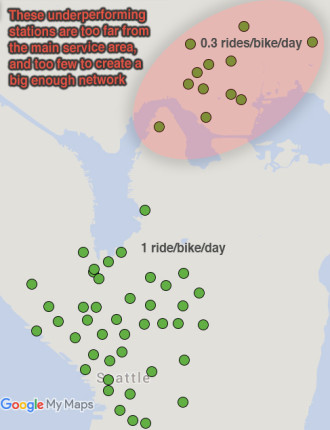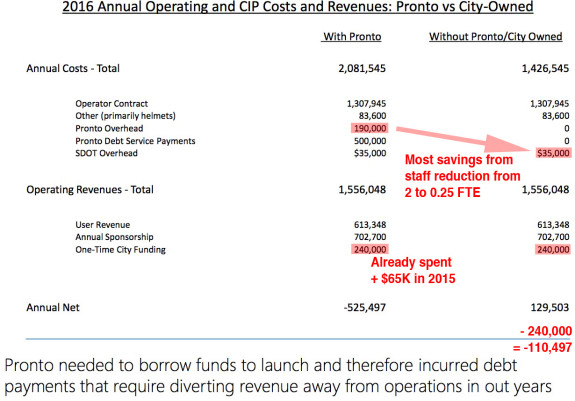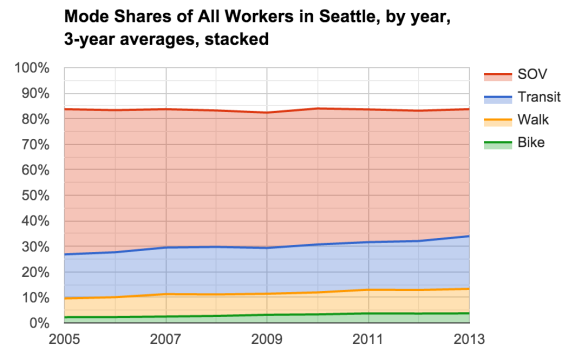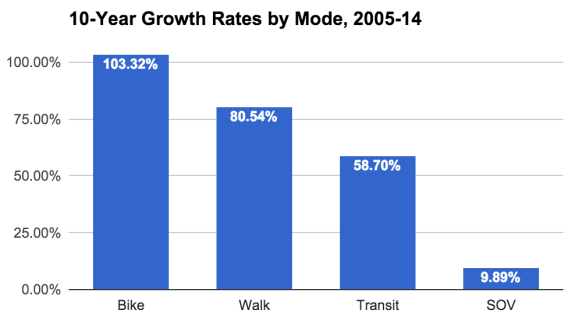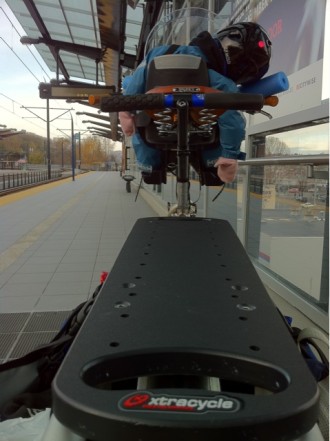
Nap time happens when nap time happens.
For families who get around town on larger kid-hauling bikes, transit can be a lifeline. Get trapped across town when the clouds open up? Nap time arrives with miles left to bike? Kids get cold? Running late and need to take a transit shortcut?
Unlike buses, which cannot hold most large bikes (like longtail or bakfiets-style bikes), Link light rail trains have space for large bikes, especially outside busy commute hours. So if there’s room on the train, it’s a great option for biking families. After all, rules allow four bikes per train car, two hanging and two standing. And a bike is a bike.
Or so I thought. But a recent Sound Transit blog post was unequivocal: No large bikes allowed. At all. Ever:
Bikes are welcome on Sound Transit trains and buses, but room is limited. It’s a safety thing. In an emergency evacuation, for example, the doors can’t be clogged with bicycles.
Because of that we’re letting our riders know we only have space for a certain number of bicycles. This is meant for the safety of all passengers. We also have restrictions on the types of bicycles you can bring on board. What you can bring are single-seat, two-wheel bicycles, including electric-assist bicycles.
What we cannot allow are oversized, cargo, tandem or fueled bicycles (including motorbikes and mopeds) and trailers.


